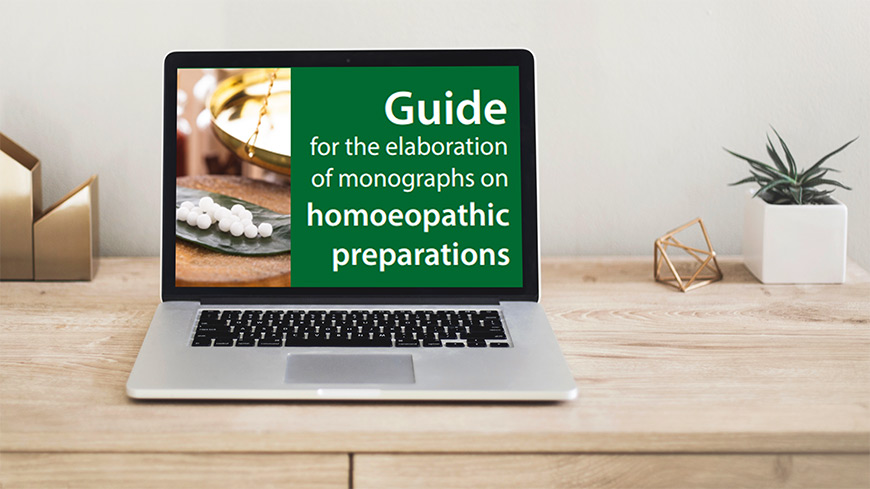First revision of the Guide for the elaboration of monographs on homoeopathic preparations (Edition 2022)
As announced in the press release dated 11 April 2022, the European Pharmacopoeia (Ph. Eur.) Commission approved the revised version of the Guide for the elaboration of monographs on homoeopathic preparations at its 172nd session in November 2021. This is the first time the guide has been updated and it now includes examples drawn from the latest new monographs. The English and French versions of the guide can be downloaded for free from the EDQM website.
The main changes to the guide are summarised below:
- Identification: the reference to the stomatal index has been deleted and HPTLC conditions have been added.
- Foreign matter (2.8.2): depending on the type of plant material (fresh material) and the harvesting method used, the possibility of applying a lower limit than the previously stipulated 5 per cent maximum has been added.
- Test for adulteration: examples of well-known adulterations have been added.
- Extractable matter: this has been updated to take the new Ph. Eur. policy on assays into account.
- Contaminant pyrrolizidine alkaloids (2.8.26): this is a new addition.
- Regarding the assay:
- an assay continues to be required for toxic stable components (no change);
- a limit test can be used instead of an assay for unstable toxic components, as is already the case for Sanguinaria for homoeopathic preparations (2687) and Toxicodendron quercifolium for homoeopathic preparations (2519), both published in Supplement 10.6.;
- for non-toxic components, the assay has been replaced by a semi-quantitative fingerprint determination of at least two appropriate markers (to be described under TESTS) using, for example, HPTLC (2.8.25): as a pilot phase on this is still ongoing, this possibility has not yet been included in the updated guide.
Six monographs to be published in the Ph. Eur. 11th Edition (published on 1st July 2022)
The Ph. Eur., unique opportunity for harmonisation at European level, has already borne fruit, with several monographs having at last been adopted after several years of work. The following 6 monographs will therefore be published in the Ph. Eur. 11th Edition with an implementation date of 1 January 2023:
- Hyoscyamus for homoeopathic preparations (2091): different sections of the mother tincture part of the monograph have been updated, including the assay section where titration has been replaced by a slightly modified version of the HPLC assay developed for Belladonna for homoeopathic preparations (2489). This same assay has also been included in the four – new – tropane alkaloid monographs published in the 11th Edition of the Ph. Eur.:
- Mandragora for homoeopathic preparations (2840)
- Bryonia for homoeopathic preparations (2490)
- Ephedra for homoeopathic preparations (2710)
- Stramonium for homoeopathic preparations (2734)
- Lastly, the monograph on Ferrum metallicum for homoeopathic preparations (2026) –revised to optimise the titration method used for the assay (poor solubility of the substance in hot copper sulfate solution) was also adopted by the Ph. Eur. Commission. The new assay dispenses with toxic copper sulfate, it is no longer necessary to filter the dissolved substance, the end point of titration with ferroin solution is more readily visible (change of colour from red-orange to blue) and cerium sulfate is more stable than potassium permanganate which, in the previous assay, had to be freshly prepared.
The Ph. Eur. thanks all the experts and other stakeholders from a wide variety of professional backgrounds who took part in this work. These achievements would not have been possible without you.
Wish to join the Ph. Eur. HOM or HMM working party in charge of the elaboration and revision of texts for homoeopathic preparations?
If you are interested in joining the network and becoming a Ph. Eur. expert in the HOM and/or HMM Working Parties, please consult the dedicated webpage of the EDQM Website Join the Network. Potential candidates are invited to check that their profile fulfils the criteria laid down in the Terms of reference and profile for members of Groups of Experts and Working Parties on page 18.




